Abstract
This paper reports a detailed follow up of 156 patients with structural upper and lower limb anomalies, obtained from the Edinburgh Register of the Newborn (a registration of 52,029 consecutive births between 1964 and 1968). At the time of this survey the patients were between 4 and 9 years of age.
The Register had noted probably 96% of all children born with limb defects in Edinburgh between 1964 and 1968. It was found that the diagnosis was completely accurate in only 26% of cases, and partially so in a further 42%.
The frequency of each anomaly has been noted, subdivided into isolated anomalies; those that occurred with other limb anomalies, and those that formed part of a syndrome. Syndactyly of toes, post-axial polydactyly of the fingers, polysyndactyly, and brachydactyly were found to have a genetic basis. All `absence' defects, pre-axial polydactyly, and multiple limb deformities appeared to be sporadic. Amongst the sporadic group, the main aetiological factors noted were an excess of maternal toxaemia of pregnancy and of illegitimate children, when compared with the Register Control Data.
Full text
PDF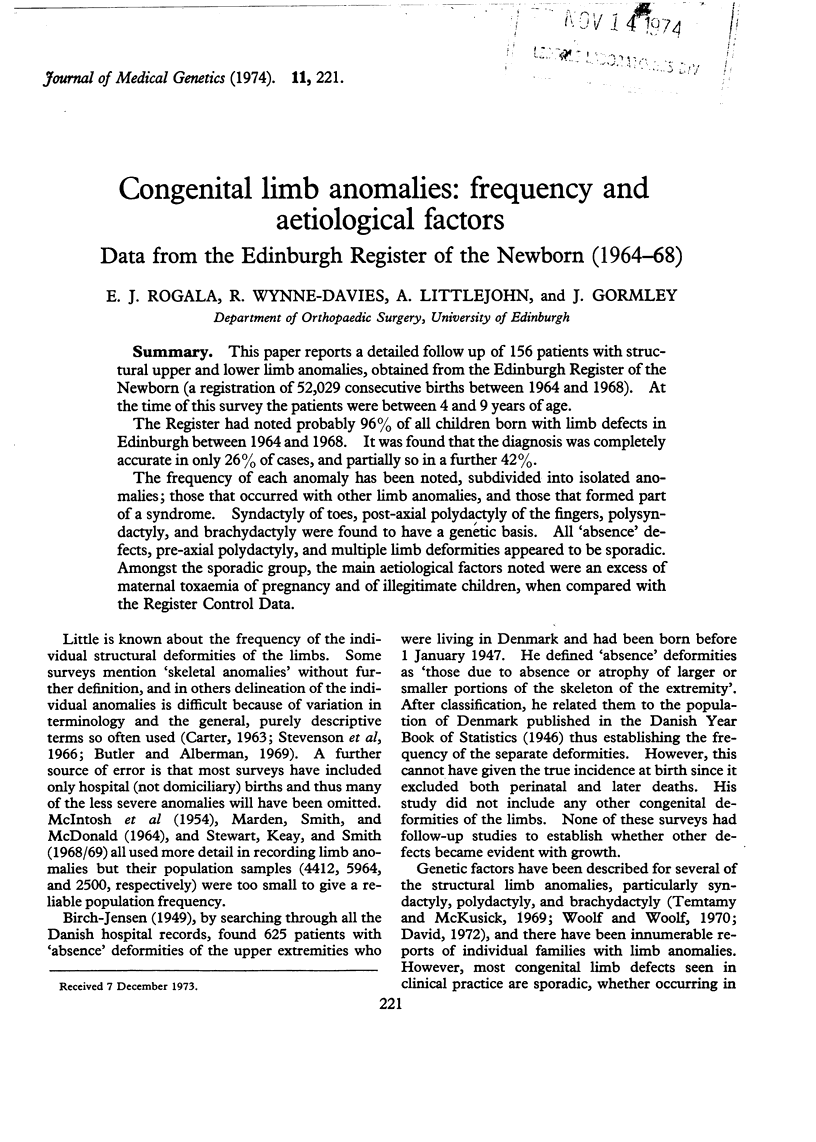
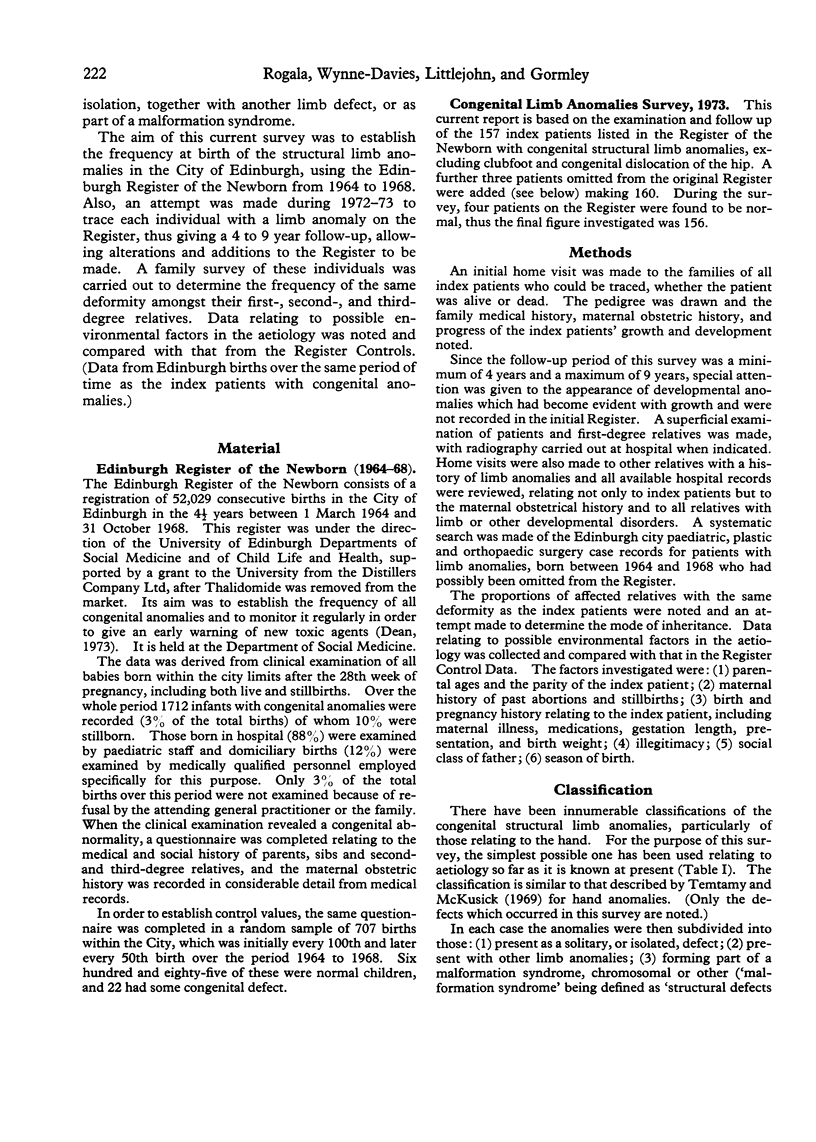
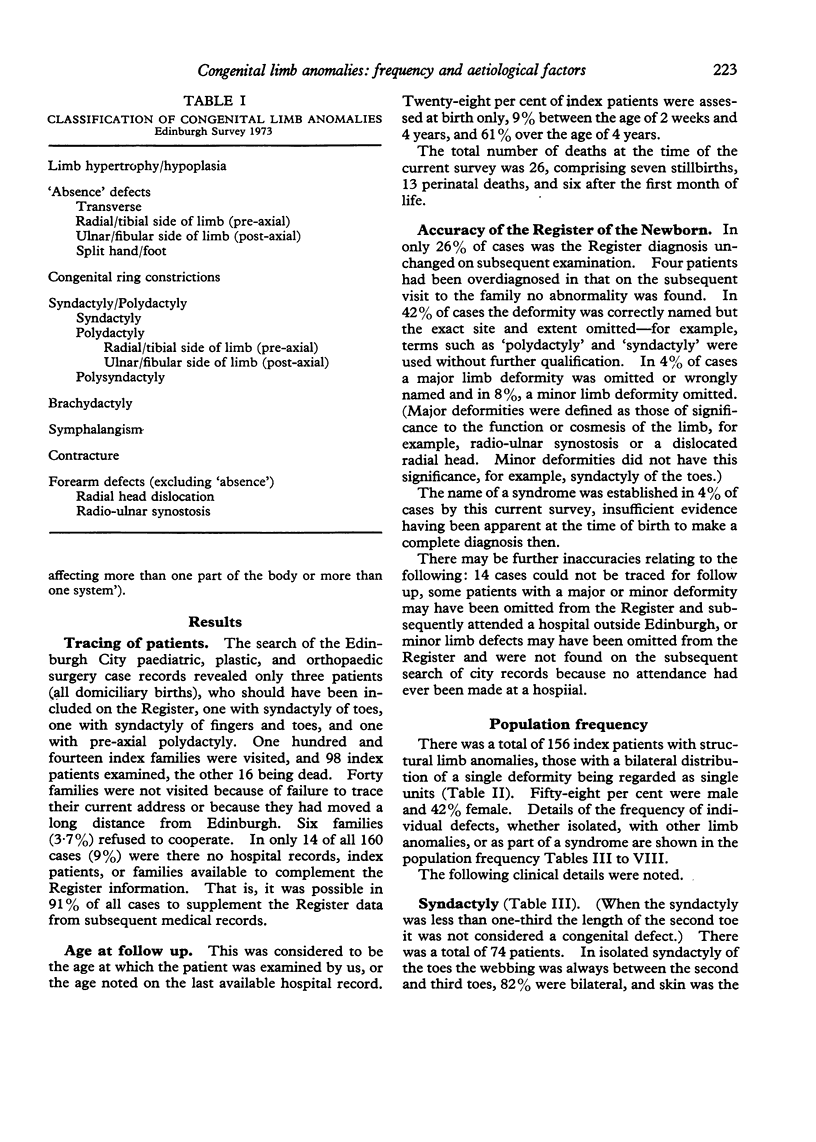
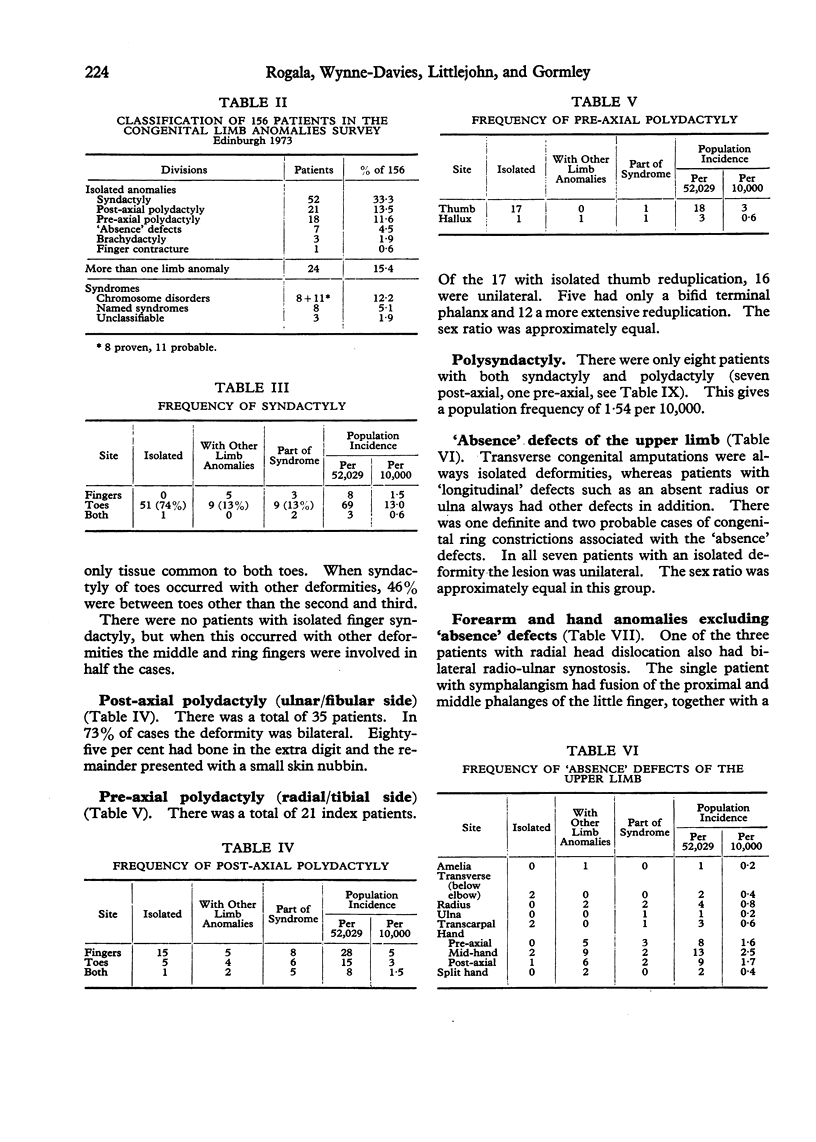
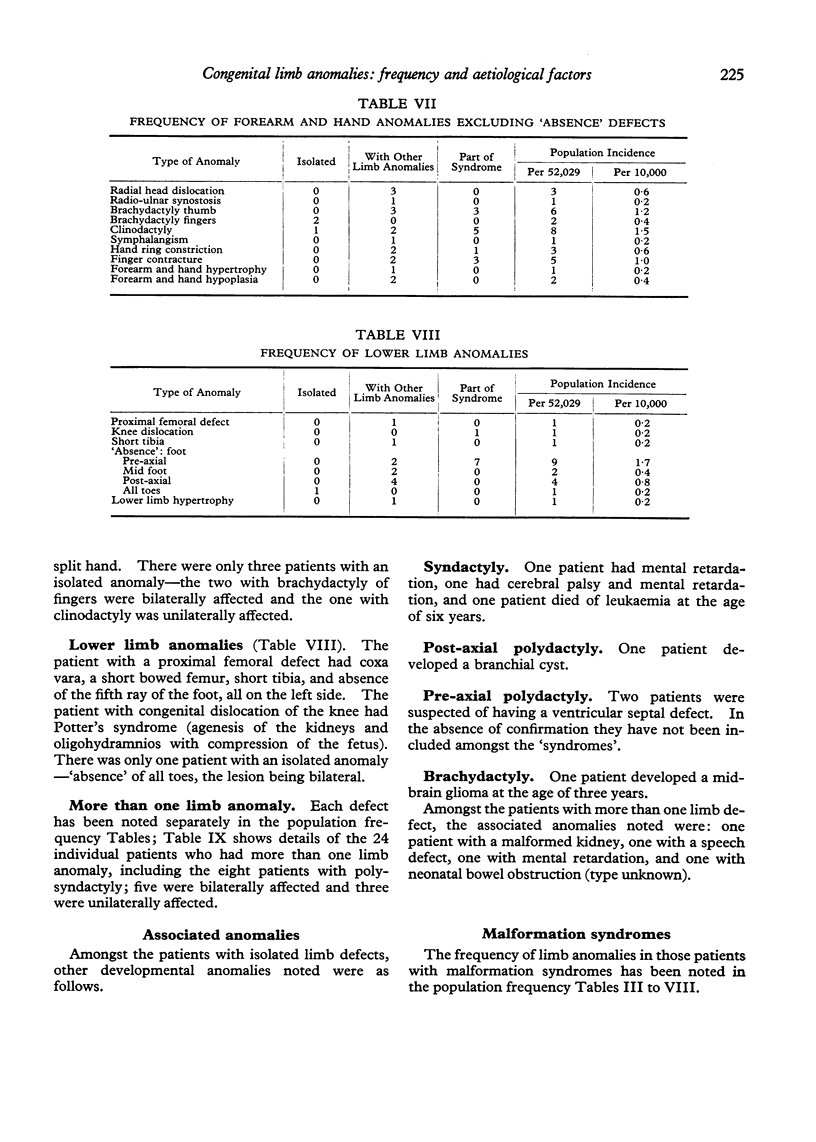
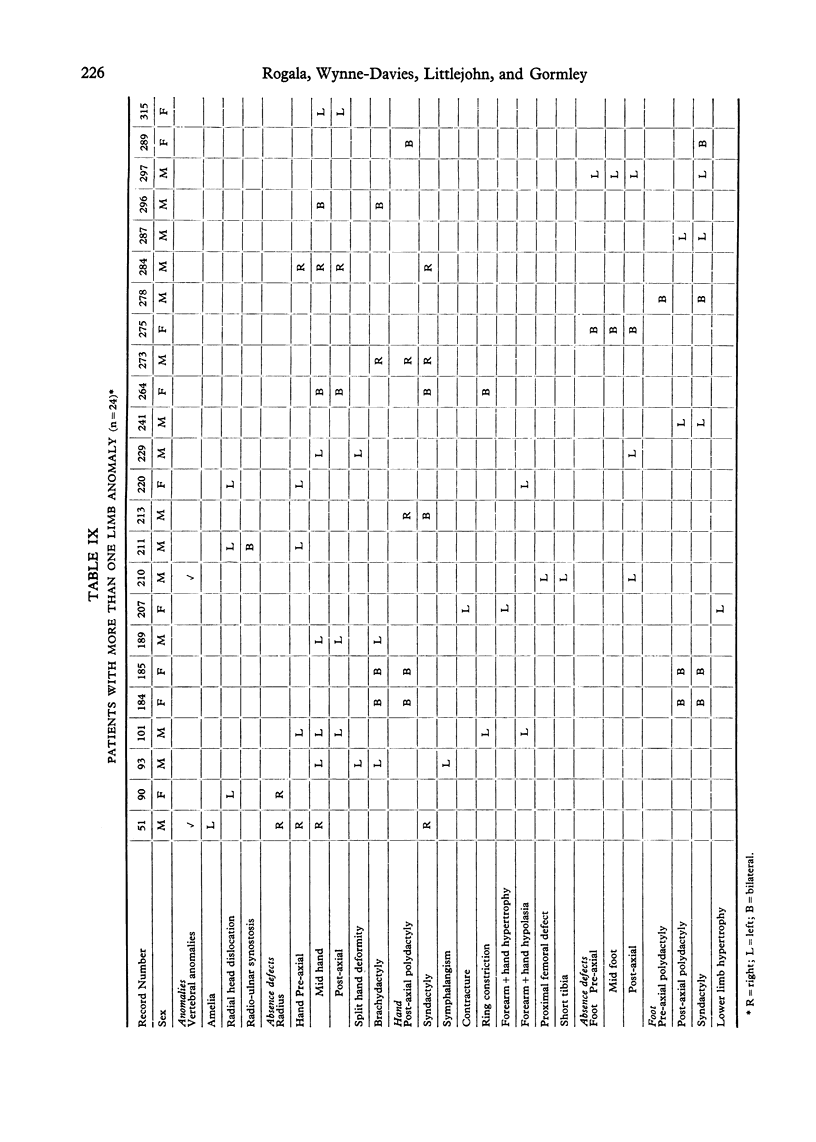
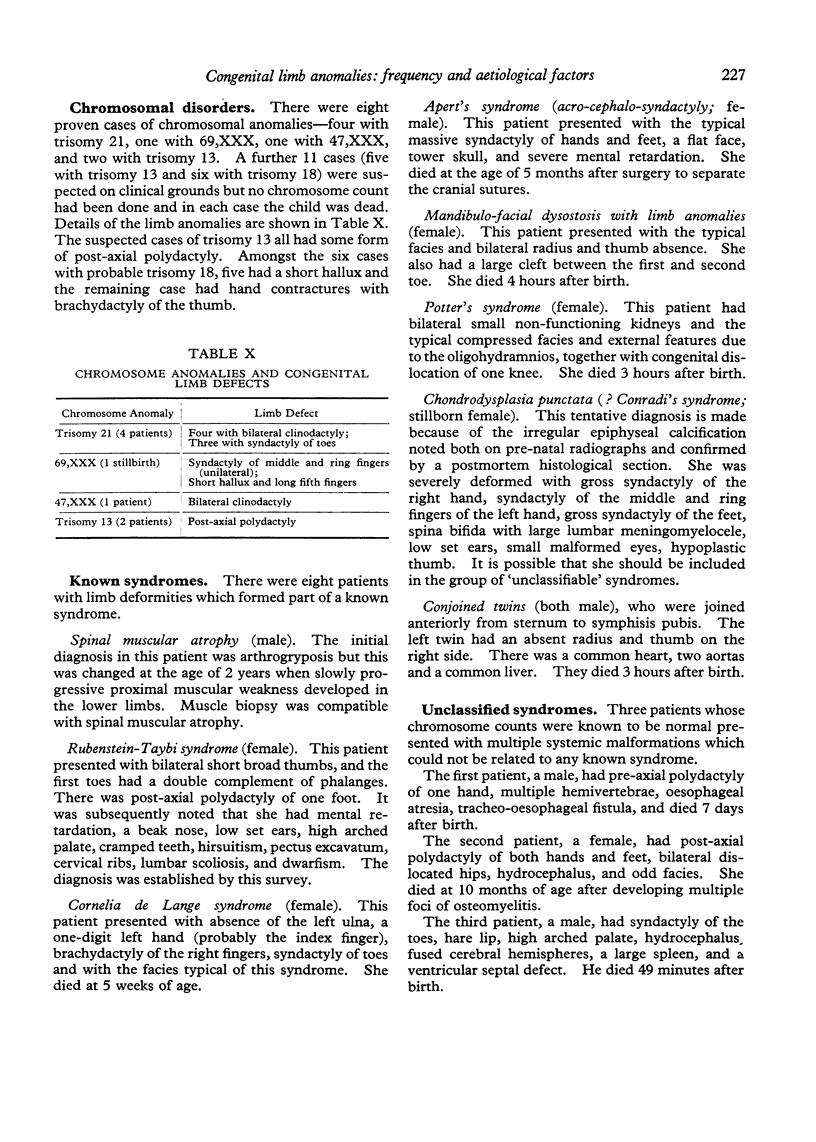
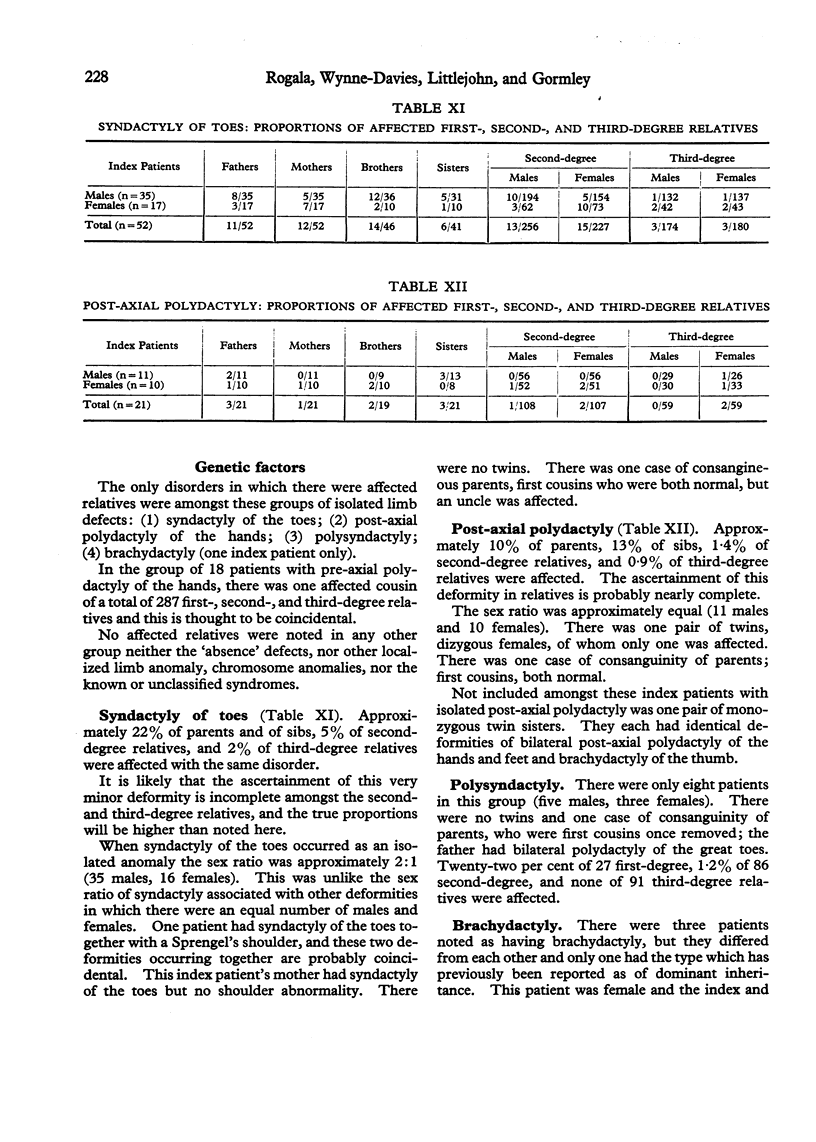
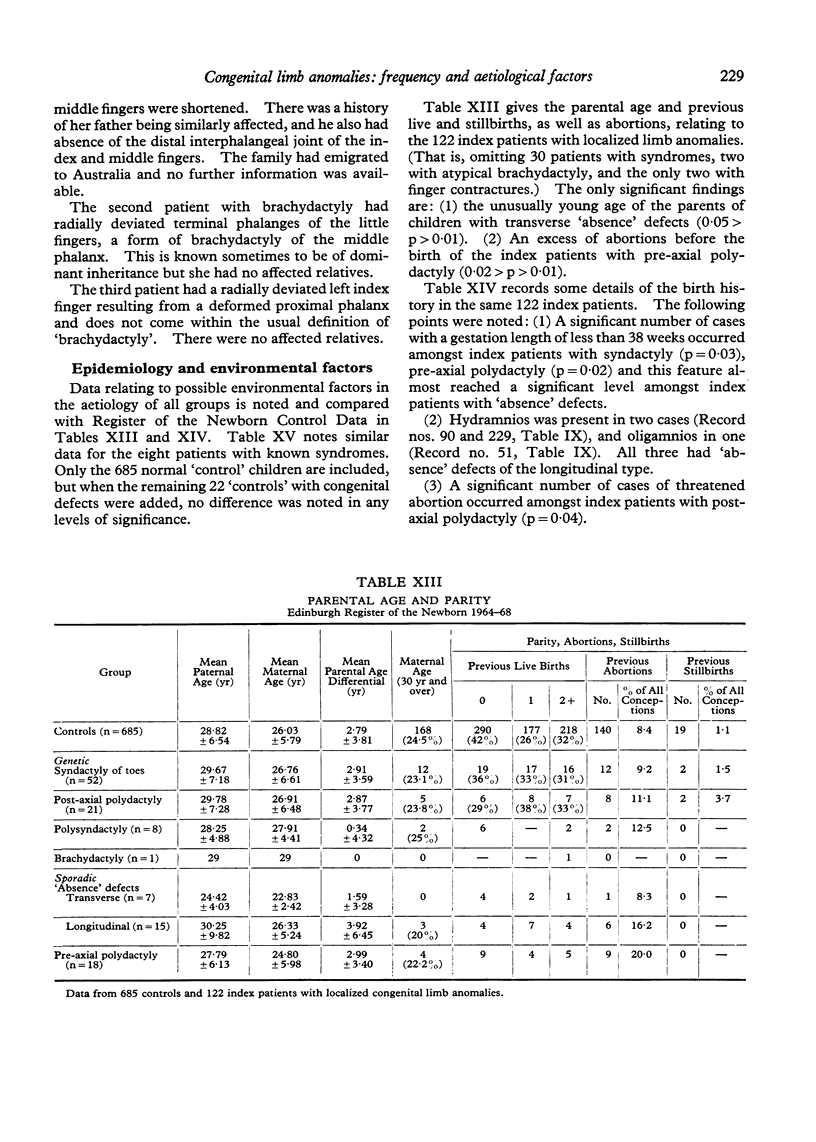

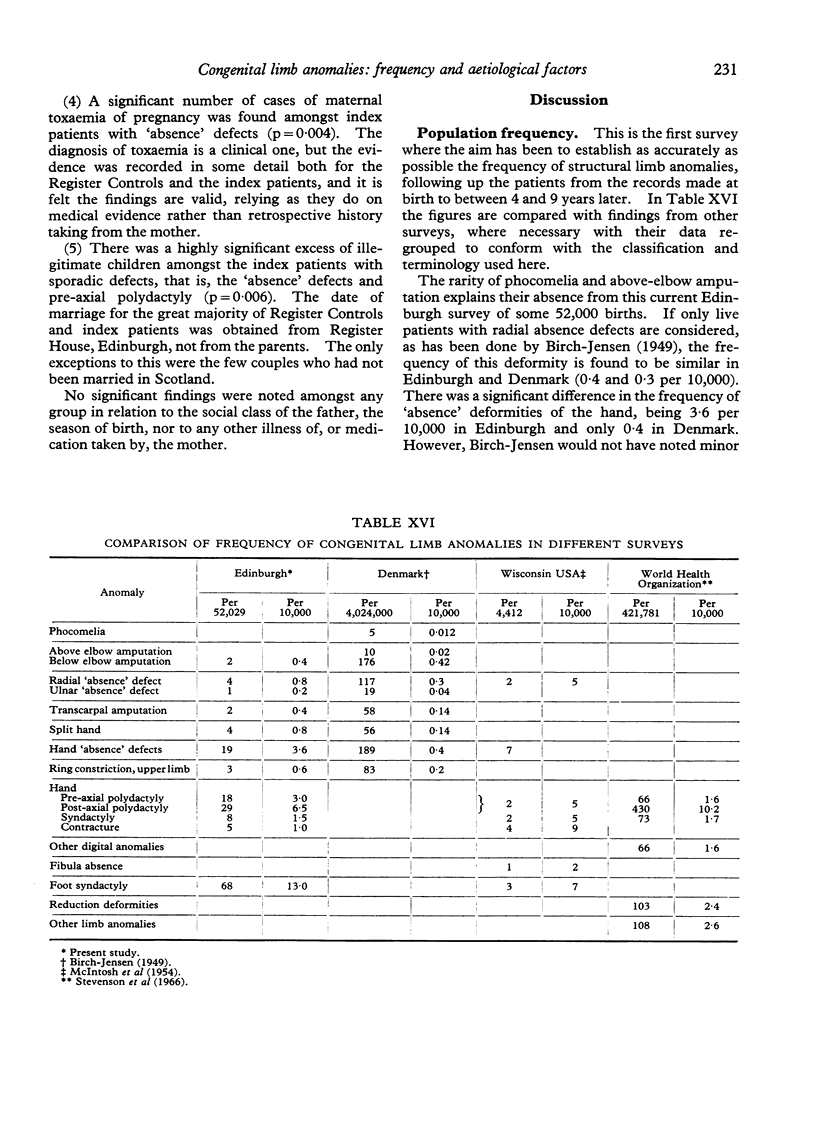
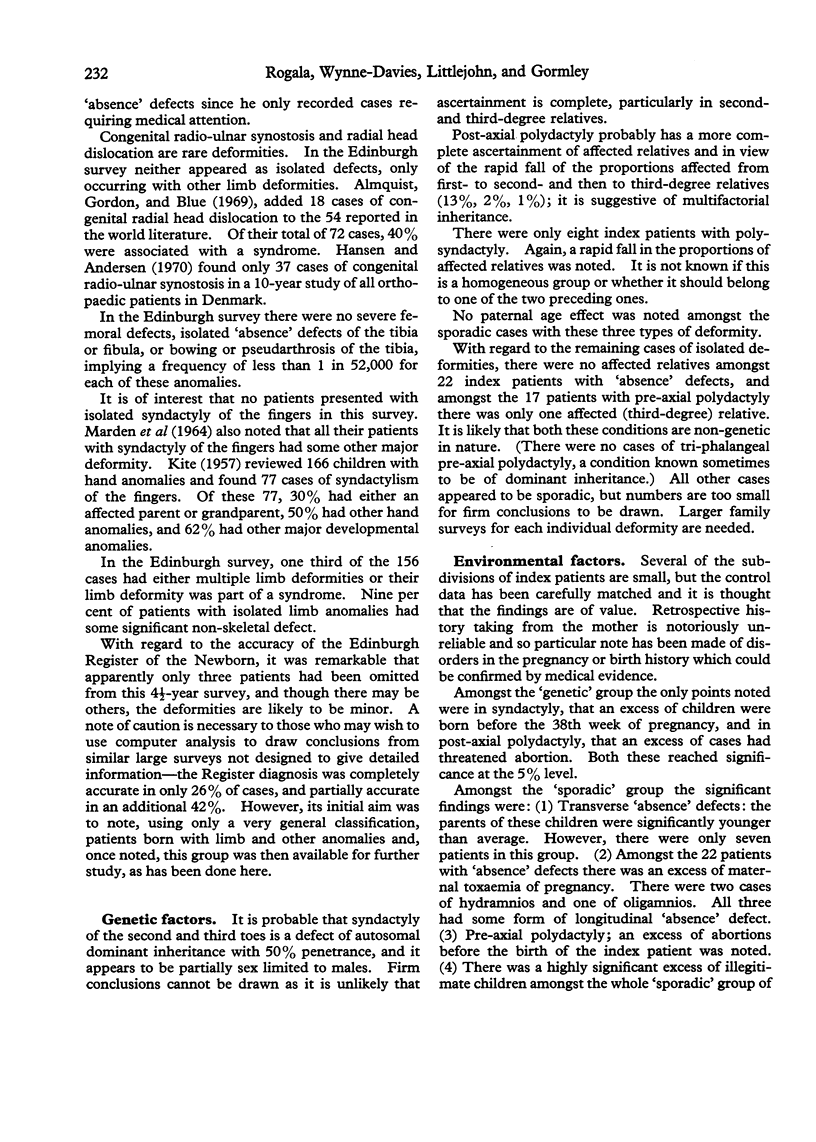
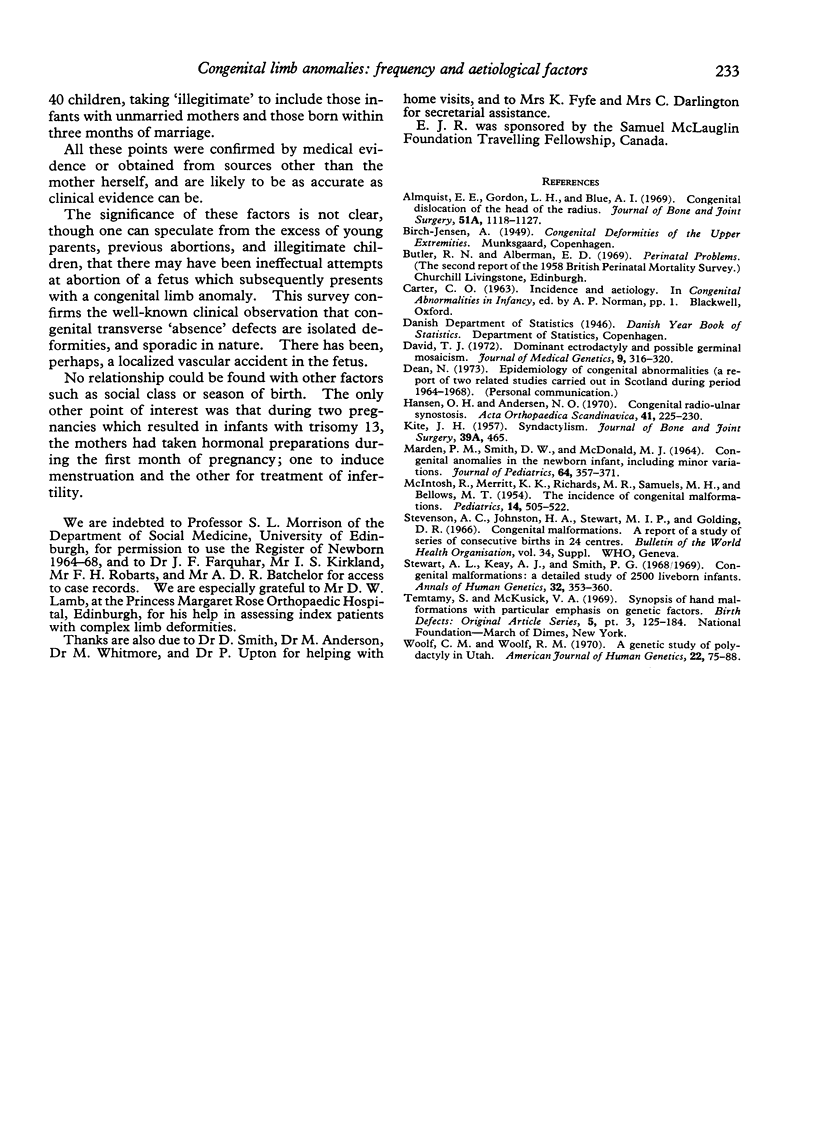
Selected References
These references are in PubMed. This may not be the complete list of references from this article.
- Almquist E. E., Gordon L. H., Blue A. I. Congenital dislocation of the head of the radius. J Bone Joint Surg Am. 1969 Sep;51(6):1118–1127. [PubMed] [Google Scholar]
- David T. J. Dominant ectrodactyly and possible germinal mosaicism. J Med Genet. 1972 Sep;9(3):316–320. doi: 10.1136/jmg.9.3.316. [DOI] [PMC free article] [PubMed] [Google Scholar]
- Hansen O. H., Andersen N. O. Congenital radio-ulnar synostosis. Report of 37 cases. Acta Orthop Scand. 1970;41(3):225–230. doi: 10.3109/17453677008991509. [DOI] [PubMed] [Google Scholar]
- MARDEN P. M., SMITH D. W., MCDONALD M. J. CONGENITAL ANOMALIES IN THE NEWBORN INFANT, INCLUDING MINOR VARIATIONS. A STUDY OF 4,412 BABIES BY SURFACE EXAMINATION FOR ANOMALIES AND BUCCAL SMEAR FOR SEX CHROMATIN. J Pediatr. 1964 Mar;64:357–371. doi: 10.1016/s0022-3476(64)80188-8. [DOI] [PubMed] [Google Scholar]
- McINTOSH R., MERRITT K. K., RICHARDS M. R., SAMUELS M. H., BELLOWS M. T. The incidence of congenital malformations: a study of 5,964 pregnancies. Pediatrics. 1954 Nov;14(5):505–522. [PubMed] [Google Scholar]
- Stewart A. L., Keay A. J., Smith P. G. Congenital malformations; a detailed study of 2500 liveborn infants. Ann Hum Genet. 1969 May;32(4):353–360. doi: 10.1111/j.1469-1809.1969.tb00086.x. [DOI] [PubMed] [Google Scholar]
- Woolf C. M., Woolf R. M. A genetic study of polydactyly in Utah. Am J Hum Genet. 1970 Jan;22(1):75–88. [PMC free article] [PubMed] [Google Scholar]


